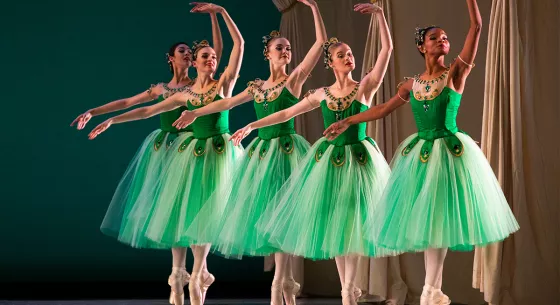Gemology: Exploring the Beautiful Science of Gemstones
Gemstones capture our imaginations with their signature sparkle, beauty, and rarity. But where do they come from? And what are they, really? Inspired by Ballet West’s production of Jewels at Northrop Feb 22-23, Outreach through Science and Art (OSA) is taking a closer look at three of the world’s most recognizable gemstones: rubies, emeralds, and diamonds, to explore what makes these jewels so unique.
Gemstones carry immense cultural significance as symbols of wealth, power, and love. Celebrities such as Elizabeth Taylor are known for flaunting their collections of gems, while the crown jewels of England host the largest diamond in the world. Jewels highlights the vibrant cultural associations of gemstones by linking emeralds, rubies, and diamonds to French, American, and Russian ballet, respectively.
But what is it about gemstones that allows them to capture our attention and sets them apart from other minerals found in the earth? The answer lies in in the structure and arrangement of their atoms. Atoms in gemstones are arranged in precise three-dimensional patterns with remarkable symmetry. The interaction of light with these complex atomic patterns is what gives gemstones their color, fire, and shine. For example, the graphite used in pencils is made of the same element that makes diamonds: carbon. The only difference between graphite and diamond is how the carbon atoms are arranged. The atomic patterns that give gemstones their sparkle also make them rare. These patterns and structures can only be created under extreme conditions within the earth, making gemstones much more rare than other minerals.
The atomic structures of gemstones are too small to see even with a microscope, but their patterns and symmetry can be replicated on a much larger scale. OSA is constructing human-sized replicas of the atomic structures of these jewels to highlight the remarkable patterns and symmetry that make these gemstones unique. See for yourself! The giant mineral models will be on display in Northrop as part of the performances Feb 22-23.
OSA is a University of Minnesota student group dedicated to uncovering connections between the arts and sciences and sharing these connections with the general public.
